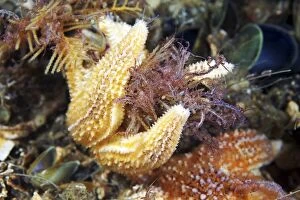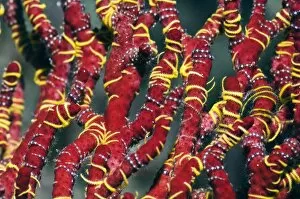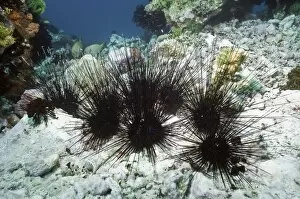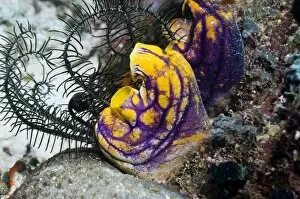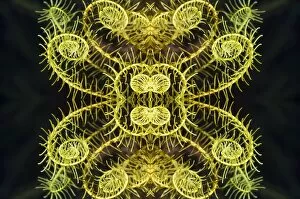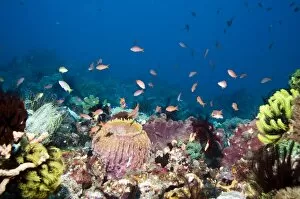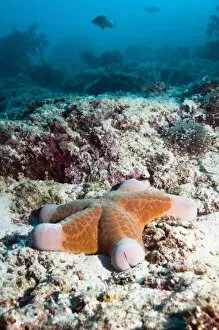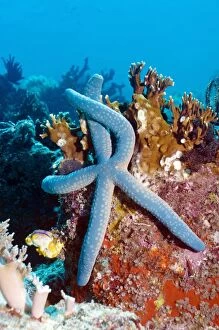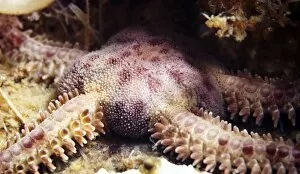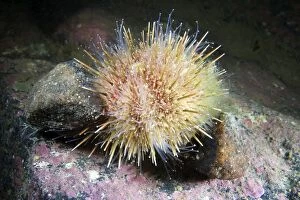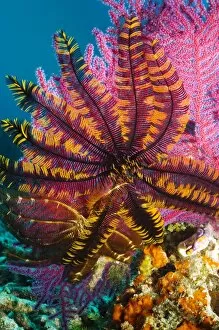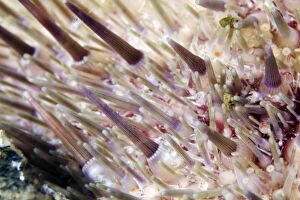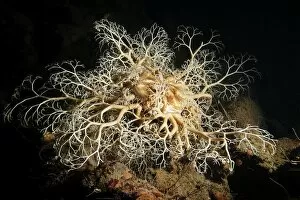Echinodermata Collection (page 9)
"Echinodermata: A Fascinating Marine World Unveiled" Diving into the depths of Kagoshima Prefecture in Kyushu, Japan, we witness a mesmerizing spectacle
All Professionally Made to Order for Quick Shipping
"Echinodermata: A Fascinating Marine World Unveiled" Diving into the depths of Kagoshima Prefecture in Kyushu, Japan, we witness a mesmerizing spectacle. The Male Leach's sea star (Leiaster leachi) takes center stage as it engages in broadcast spawning, releasing streams of sperm from its arms. This captivating moment has earned it the prestigious title of Wildlife Photographer of the Year 2022 - Underwater category winner. But echinoderms have a rich history that stretches far beyond this contemporary marvel. From ancient marine reptiles that once roamed our oceans to delicate sea cucumbers gracefully navigating their surroundings, these creatures have left an indelible mark on Earth's evolutionary timeline. Venturing onto sandy shores, we stumble upon a starfish basking in the warmth of sunlight. Its presence reminds us of the diverse forms and colors exhibited by these enchanting beings. And let us not forget St. Cuthberts Beads – rosaries crafted from crinoid columnals – symbolizing both religious devotion and nature's intricate beauty. Delving further into history, we encounter Pentrimites robustus and Tylocidaris clavigera – fossils frozen in time as blastoids and sea urchins respectively. Their preserved remains offer glimpses into prehistoric ecosystems that once thrived beneath ancient seas. The anal sack of a double-spined urchin captures our attention next, highlighting the intricacies hidden within even seemingly mundane aspects of echinoderm anatomy. These fascinating structures serve vital functions within their underwater realm. Traveling across continents to Strawberry Hill State Park along Oregon's Pacific coast, Ochre & Purple Sea Stars emerge from tidal zones like vibrant jewels adorning rocky landscapes. Their presence is a testament to resilience amidst shifting tides and changing environments.

